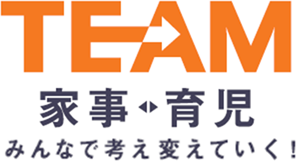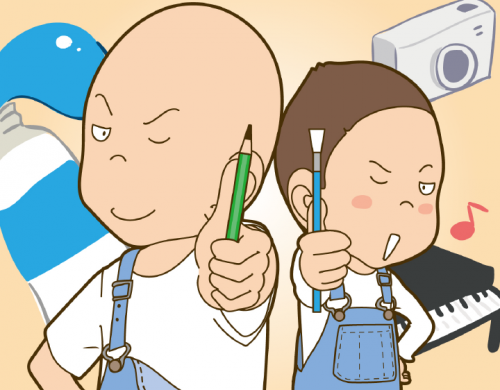Table of Contents
Parenting cartoon “Art in the Family
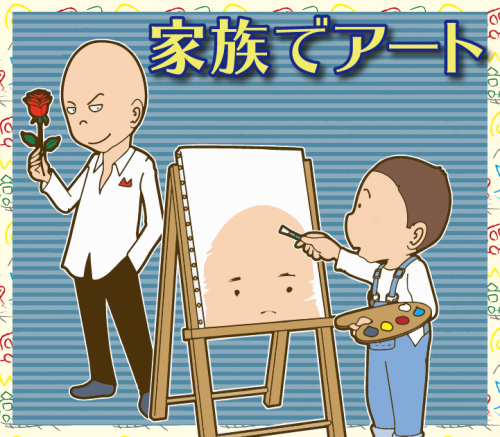
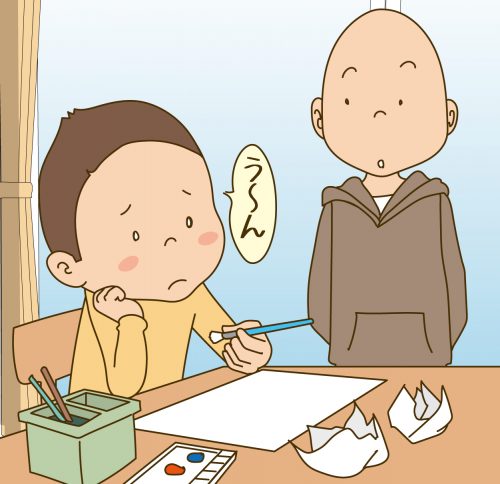
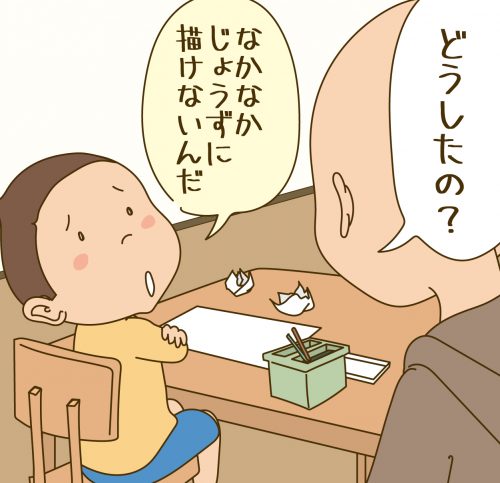
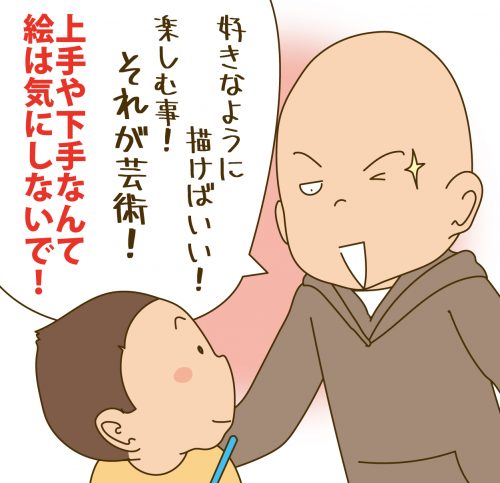
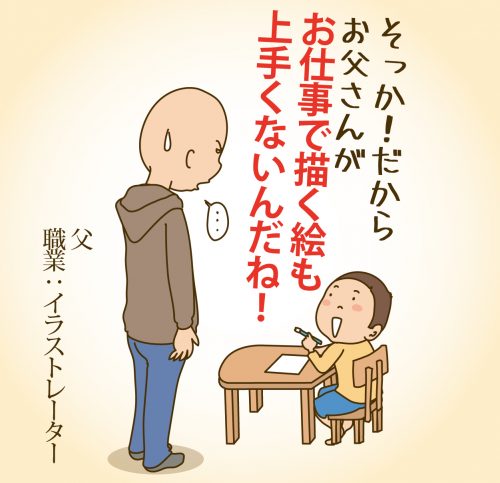

Profile
Eiichi
After working for a design company in Tokyo, he became a freelance illustrator. He is a hard-working father who creates animation, manga, and illustrations, including winning the Yubari International Fantastic Film Festival’s International Short Film Showcase Division Excellence in Animation Award.
Art Fall has arrived! Enjoy painting with Dad!
Autumn is the season when the heat is gone and the weather becomes more comfortable.
This is the perfect season to take your time and work on your painting.
He said he was playing with his children, drawing pictures with them,
You may be surprised at the freedom of ideas that only children have.
This time,
Drawing games and museum fun,
Here are some pointers on how to deepen parent-child interaction through pictures.
Even moms and dads who are not good at drawing will surely enjoy playing with the drawing!
Communicate with your child by drawing!
Drawing is often incorporated into play with children.
What are some things to keep in mind to make drawing fun for parents and children?
We spoke with Momoko Doi, who has worked as a nursery school teacher for 25 years and currently gives lectures and other talks throughout Japan on the importance of dialogue in drawing.
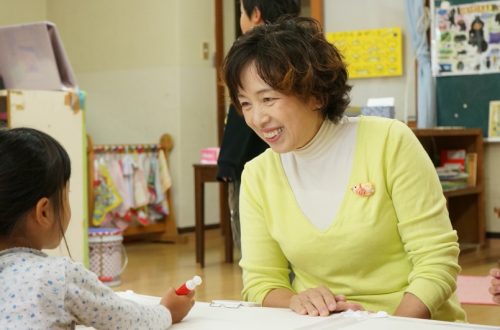
Drawing is a communication tool with children
When do your children draw?
Nursery schools and kindergartens allow children to draw or give them coloring books for indoor play on rainy days.
However, I am a little concerned that painting has become a kind of “event” and the creation of artwork has become the “objective.
It should be done more routinely, just like singing a song or playing in the sandbox.
Pictures are a very effective communication tool for learning about a child’s thoughts and feelings that cannot be adequately conveyed in words, as they naturally express what they have learned in life.
It is important for moms and dads to feel as if they are listening to the thoughts and feelings in the expressed pictures, and to know the child’s emotions.
Changes in Children’s Drawing and Communication by Age
Although there are individual differences from child to child, a child’s drawing changes with age as follows
Around the age of one, the ego is fully engaged, and the child nudges with semicircular arc-like lines created by the reciprocating motion of the arms.
It is the kind of painting where you enjoy the appearance of lines as you move your arms.
Around age 2, they use words and begin to name their drawings “mommy” and “daddy.
You will then draw a circle that could be connected by a single line from the start point to the end point.
From this point on, the child is able to imagine what he or she wants to draw before moving the hand.
Around the age of three, you can expand the image by listening a lot to what the child draws and how he or she feels.
By focusing on a specific theme, such as “Today we went to the zoo, so let’s draw a picture of it,” the students will be able to imagine and draw one thing without hesitation.
Be careful to draw pictures that are appropriate for the child’s level of ability, since a child may be asked to draw a good picture and the mom or dad may lower the child’s self-esteem.
Around 4~5 years old, they often draw the sun indicating the top of the picture.
In addition to looking like ○, they will also draw shapes such as △ □.
This is also the time when they develop a sense of camaraderie and begin to be aware of how they are viewed, which can lead to a fear or dislike of drawing if they are compared to others or are told they are not good enough.
Children from the age of 5 and up can decide their own themes when asked by their parents, “What shall we paint? Let them paint freely. Communication can then be achieved by listening carefully to the artist’s thoughts and feelings about the painting, and by offering specific praise and recognition.
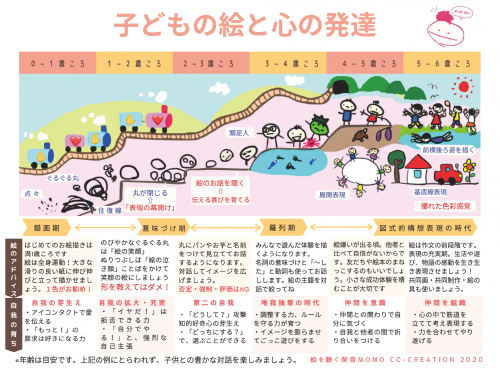 Figure used by Ms. Doi when explaining the changes in children’s drawings by age at lectures and other events.
Figure used by Ms. Doi when explaining the changes in children’s drawings by age at lectures and other events.
How should I get involved in my child’s drawing?
How should parents interact with their children who draw?
First of all, the basic premise is not to deny the child free expression. This leads to denying individuality.
When moms and dads “listen” to their children’s drawings in an interesting way, the children will love drawing and will be motivated to want to draw more.
Being praised by the people you love is the greatest feast for the soul.
Be receptive to the child’s ideas, empathize with them and give specific praise.
You should tell them what you like about their work, such as, “This way of drawing is very imaginative,” or “You seem to be having a lot of fun drawing this.
I think it is important to continue to increase the number of successful experiences of “getting it done” both in daily life and through painting, and to continue to take an approach that will enhance their sense of self-esteem.
Dads and kids playing with drawings
I want to add a twist to my usual drawing games!
We asked Ms. Yumiko Yamaguchi, who teaches drawing classes and parent-child play, for ideas to make drawing fun.
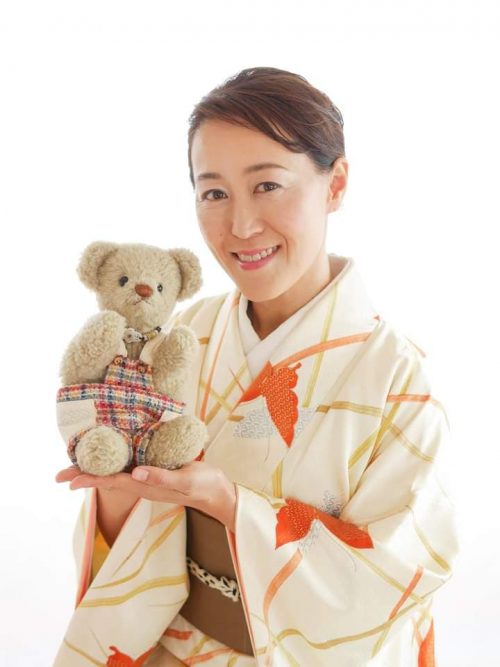
Here are three art plays where children can experience success.
No matter how you draw it, you may like it or dislike it, but it will not fail.
There is no such thing as which one is the best.
All of these play styles can enhance a child’s sense of self-esteem, so we encourage you to incorporate them into your family.
*Age range is around 1-3 years old
Children with siblings may have a hard time because they compare their own drawing skills with their siblings.
It is not about being good or bad, but about developing sensitivity.
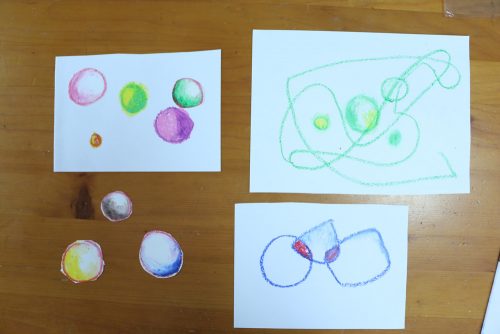
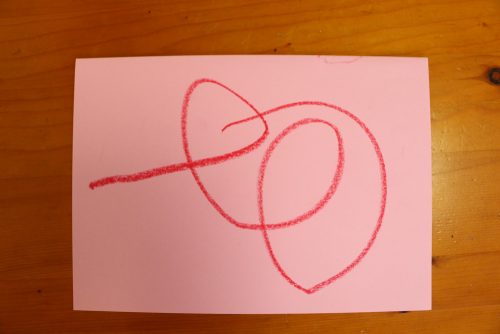
[Required.
- A3~4 size paper
- crayon
- Scissors and glue (not necessary)
How to play
- 1Let the child nudge freely.
- 2Moms and dads add lines and circles to the strokes.
- 3Parents and children choose their favorite color and paint together around the area where the circles overlap.
- 4 Ask the child to add more color to the area painted in 3), and enjoy the accidental color mixing of crayons that occurs.
Enjoy mixing colors to see what kind of colors you can create by adding colors.
Crayons are originally intended for drawing lines, but by mixing them together, beautiful colors can be created.
It is just a cursive stroke, but just by expanding the width like this, you can feel the charm of the color.
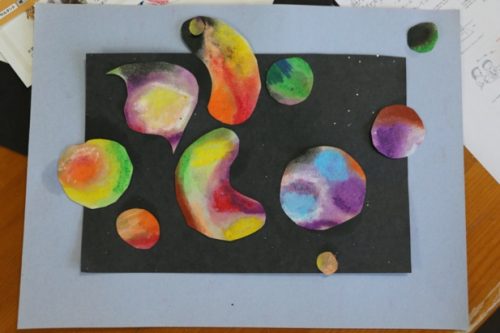
Instead of just painting a mess, you can enjoy it in a different way by cutting it into beautiful shapes and pasting it on another piece of paper while laying it out as a fish or various other shapes.
*Age range is around 3~4 years old.
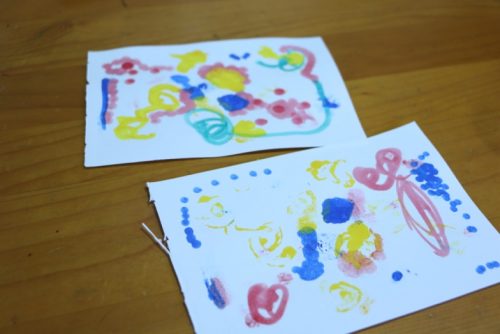
[Required.
- cotton swab
- About 3 plastic bottle lids
- Paint or water-based pen
- drawing paper
- water (esp. cool, fresh water, e.g. drinking water)
How to play
- 1Prepare about 3 colors of paint diluted with water in the lid of a plastic bottle.
- 21 ) moisten a cotton swab and have the students freely draw dots on one side of the paper.
- 32 ) is folded in half to allow the colors to emerge on both sides and to create various shapes.
- 4Give them the freedom to think about what that shape looks like, and in some cases, cut it out.
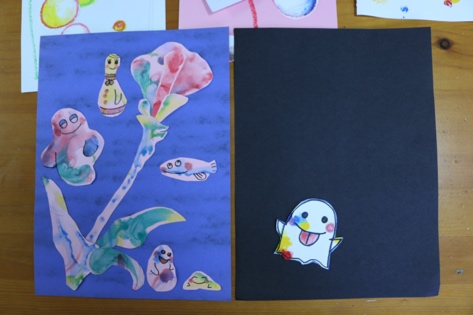
In children who have difficulty with drawing, this may be due to difficulty with imagery.
When drawing a rabbit in such a case, the father draws a circle and says to the child, “If there were ears here, it would look like a rabbit,” and asks the child to add to the picture, etc. Drawing while promoting dialogue is an enjoyable way to collaborate.
It can also be done with fingers instead of cotton swabs. Parents and children will enjoy the time to express themselves while enhancing their imagination.
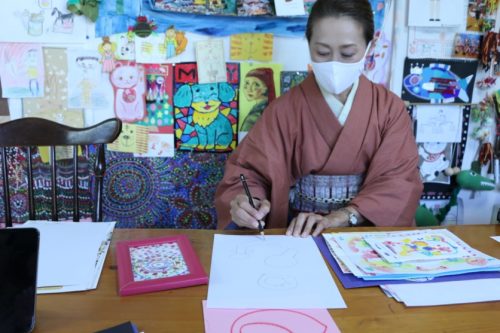
*Age range is around 1st and 2nd grade elementary school
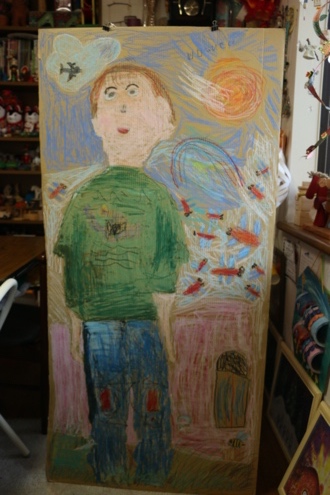
[Required.
- Large cardboard boxes
- color pencil
- Crayons, paints, etc.
How to play
- 1Prepare a large cardboard box and lay the child on his/her back.
- 21 ) Draw lines and mold the child as the father traces the outside of the child. The child’s hands can be spread out, feet can be oriented, etc.
*Because pens and crayons will get on clothes, it is best to use thin colored pencils to make a mold and then use crayons or paints. - 3The child draws a picture of himself with a crayon while looking at his face and clothes in the mirror.
There are not many opportunities to paint on something as large as this.
Why don’t you try painting on the balcony or in the garden on your day off, while having dynamic skin-to-skin interaction?
When enjoying drawing with children, the finished product is important, but the time spent together should also be cherished.
Rather than the success of the project, the value should be placed on the child’s “enjoyment of working with Dad” and on Mom and Dad’s discovery of “what colors and shapes did the child find beautiful? What are the colors and shapes that the child found beautiful?
Let’s enjoy the museum with your child!
Children not only love to draw, but also enjoy looking at them.
Since art museums are the best place to see pictures, we asked Ms. Ayako Inaniwa, curator of the Tokyo Metropolitan Art Museum, for pointers on how parents and children can enjoy art museums together.
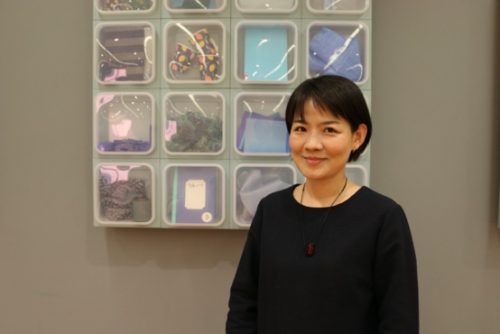
Take a step into the world of museums!
The Tokyo Metropolitan Art Museum is promoting a learning project called “Museum Start Aiuno,” in which nine museums in Ueno Park collaborate with each other.
Family-friendly participatory programs are held throughout the year.
For parents, it is an opportunity to learn how to support their children’s learning, and for parents to enjoy and deepen their own encounters with culture.
Due in part to the Corona Disaster, the program is now in a format that blends the best of online with visiting the museum in person.
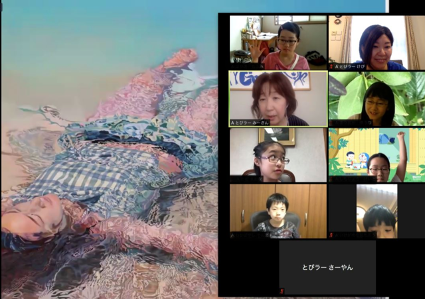
Many children become interested in painting by learning how to see and think about art through workshops.
Many people think that taking their children to an art museum is a hurdle, but it is a good idea to start out by participating in a hands-on program like this one, which will give friends and parents and children a chance to learn about painting together.
What does it mean to “see” a picture well?
We usually “see” various things without thinking about it, but in reality, even when we see an object in our eyes, we only dimly perceive many parts of it.
It is said that this is because the brain cannot process all the information if it clearly perceives all the objects it sees.
Therefore, when looking at a picture, you need to “look at it consciously” as if you were observing a plant, rather than simply “looking” at it absentmindedly.
It is said that the average time an adult spends looking at a painting in a museum is about one minute, but in an art appreciation workshop with children, the participants spend more than 15 minutes looking at a single work of art.
By “looking at the same picture, thinking about it, talking about it in words, and listening to each other’s opinions” together with several other people, you can deepen your own awareness and broaden your perspective by listening to other people’s ideas and opinions.
Because art does not have a single answer, it can be an activity that values diversity, and because every child’s opinion is shared in the group in a positive way, it can help foster a sense of self-affirmation.
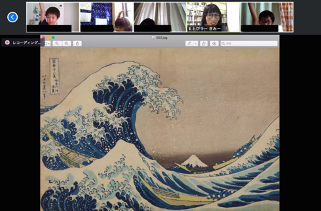
For example, when viewing Hokusai Katsushika’s “Fugaku Sanjurokkei (Thirty-six Views of Mt. Fuji) Kanagawaoki Namiura”,
From superficial information such as “the waves are big,” “you can see people,” and “the shape of the waves is similar to the shape of Mt,
Some answers deepen one hierarchy of thought, such as, “Why are there people here in spite of this storm?” or “The ocean is deep blue, so this ocean might be deep.”
Therefore, it is important to take the time to discover a single picture from different perspectives and put it into words.
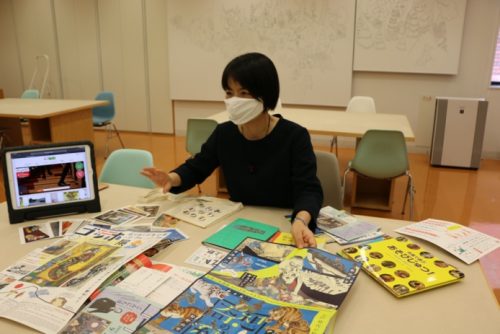
There was also a workshop to locate various blue objects on display in the museums and art galleries of Ueno Park.
When they are asked to tell what kind of blue they found, they can see fine differences in the color of blue, such as “cold blue” and “deep blue.
Regarding “sophisticated blue,” the kid asked his mom, “Does ‘sophisticated’ mean anything good?” She asked.
The mother said, “‘Sophisticated’ means good, but I wonder what kind of blue it is,” and the parent and child were engaged in a thought process together over the color blue.
In this way, children and their parents can enjoy using their brains as they deepen their thinking by verbalizing a single object from multiple perspectives. Recently, many fathers and their children have been participating.
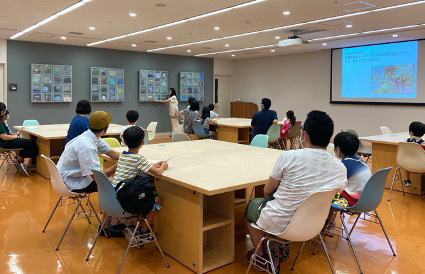
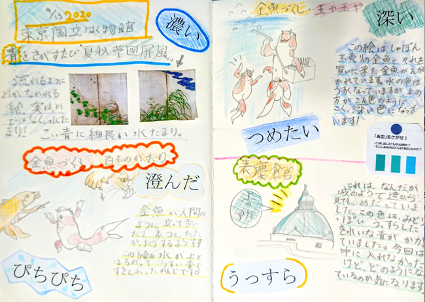
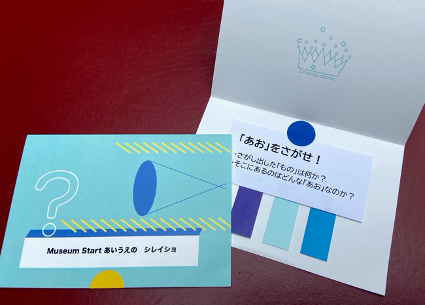
Art appreciation and points of interest at home
There are many ways to enjoy art at home, even when it is difficult to go out.
A familiar example is picture books. Through picture books, children can learn about various cultures around the world and expand their visual experience.
It would also be a good idea to create a “restroom museum”.
Simply choose with your child a commercially available card or postcard of a famous painting, a flyer from an exhibition, or an artwork introduced in a newspaper, etc., and hang it on the wall of the bathroom.
Since I use the bathroom every day, I tend to take a closer look at the artwork.
Then the child asks, “Is this what that picture means?” Why is that picture ____?” I recommend this because it will get them interested.
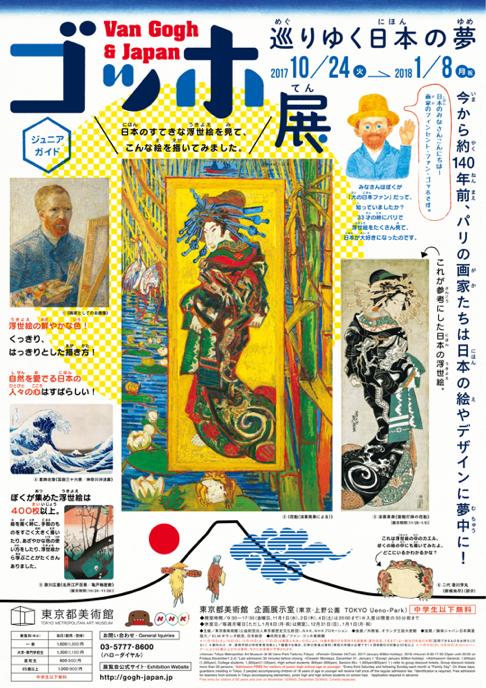 Example: Junior Guide given at the exhibition
Example: Junior Guide given at the exhibition
Printed materials distributed at the Tokyo Metropolitan Art Museum can be downloaded from the following links.
https://www.tobikan.jp/learn/resoucebox.html
Click here for a list of metropolitan cultural facilities.
https://www.seikatubunka.metro.tokyo.lg.jp/bunka/bunka_shisetsu/0000000239.html
*When visiting museums or participating in various programs, please check each facility’s website for information on their measures taken to prevent transmission of new coronavirus infection.

